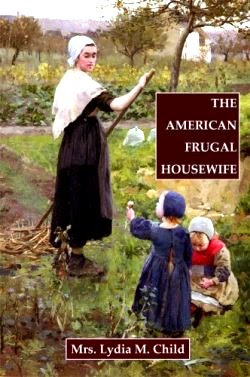Over the years, too many to count, I have tried several pie crust recipes. This is without a doubt the best. It is from a Farm Journal Pie Cookbook 1965 edition.
When I make pie crust, I try to make two or more at the same time. They freeze well baked or unbaked. Much better than the frozen ones you buy in the store and just as handy. If you want to just unfold it and put it in the pie pan, roll it out, lay a piece of wax paper or parchment paper on top and fold it gently in fourths; slip into a freezer bag and pop in the freezer. I usually just roll mine into a small disc and freeze. You can put more than one in the same bag.
Lard Crusts are very good, but difficult to handle and Lard is getting hard to find.
This will make you a flakey, tender crust.
Pie Crust
pastry for a two crust 8 or 9 inch pie - 78¢
1 teaspoon salt
3/4 cup shortening (a good all vegetable shortening)
4 to 5 Tablespoons ice water (A couple of ice cubes in some water while you get everything else ready)
One Crust Pie
1 cup flour
1/2 teaspoon salt
1/3 cup plus 1 tablespoon shortening
2 1/2 Tablespoons ice water
10 inch 2 crust pie
3 cups flour
1 1/2 teaspoon salt
1 cup plus 2 Tablespoons shortening
6 tablespoons ice water
For all pie crusts: Whisk together the flour and salt, cut in the shortening until small pea size pieces. Add ice water a spoonful or so at a time, how much water will vary with the weather. Just enough to make the dough stay together.
Roll out on floured board till size needed. Thinner is better. Roll from the center out, not all the way across so your edges do not get to thin.
If using for a baked pie shell, prick all over with a fork. Chill while the oven heats to 450°. Chilling will help it not bubble. If desired you may add pie weights or beans on a piece of foil to crust, but I have found chilling the dough will keep it flat. Bake for 10 to 15 minutes or until desired shade of brown. (I usually stick it in my freezer while the oven is heating.)
For unbaked, place in pie plate and add filling according to your recipe.
For a easy lattice crust. Taking pie crust strips at each end, twist lightly in a spiral and lay across pie all in one direction. Taking more twisted strips lay in the other direction. It will look similar to a woven lattice crust with a lot less work.


















I am going to bookmark this because this is something I want to learn how to do. Thanks for the recipe!
ReplyDeleteI am too. I have always been so scared to do a homemade pie crust. :(
ReplyDeleteI always have trouble with the crust sticking to the counter as I roll it and then breaking as I transfer it to the pie pan. My father in law says lard crusts are the only way to go, so I recently bought a big thing of lard from an Amish farmer.
ReplyDeleteUse wax paper on the counter and another sheet on top of the dough. This makes is easy to roll and manipuate.
DeleteI don't understand how to deal with the ice cubes in pie crust recipes. Nothing is said about letting them melt. They are just sitting like big lumps in my pie dough. Help!
ReplyDeleteUse only the water, not the ice cubes.(Instructions say to use ice water)
DeleteSo sorry about that, I thought I had made it clear. Just put a couple of ice cubes in the water to chill it. DO NOT PUT them in the pie dough. Just measure the water and use that. The ice cubes are just to give you cold water.
ReplyDeleteThis is pretty much my pie dough recipe. I add a teaspoon of sugar too. Also when everything is mixed, set the bowl with the dough aside. Let it 'rest' for 10 or 15 minutes, make your filling, THEN roll out your crust. It is particularly helpful if you have quite humid weather.
ReplyDeleteI'm confused as to why you are against hydrogenated lard but not shortening which is hydrogenated.
DeleteI am the one who doesn't actually use shortening anymore because my husband can't use the kind of oils in it with his medication.
DeleteI don't think hydrogenated lard is any better for you than shortening...I prefer natural, unhydrogenated lard, and luckily, am able to buy it or get it from my brother-in-law's homestead hogs.
I also have pretty good success with lard for pie crusts. Myrna likes shortening, and I think you should use what you like, just as she does and I do.
I used to use shortening for pie crusts; and I admit, I don't make nearly as many pies as Myrna, who has more "customers", friends and family, who love her pie.
I am not against hydrogenated lard, though I think lard that is not hydrogenated works better. I just prefer working with a crust made with shortening.
ReplyDeleteThis is a good basic recipe for beginners to use and than when they are surer of their skills there are lots of pie crust recipes to try.
I started using Farm Journal's oil crust when I became a vegetarian way back in the seventies...then I realized it is far superior to my old lard recipes! Usually vegetarian "fixes" re never quite as good as what they try to fix--in this case, I rejoice! Thanks for reminding me how great that old Farm Journal recipe book is!
ReplyDeleteMy mom has this book as uses it to make her pie crusts. Can you tell me what page this one is on? I want to see if it's the same one she used. Thank you.
ReplyDeleteI'm sorry to say that I don't have this book...it belonged to my sister, Myrna, who posted this. She passed in September, and her daughter donated many of her cookbooks. However, this is a classic pie crust recipe found in many cookbooks. You may have to call Mom to see if this is her recipe.
Delete